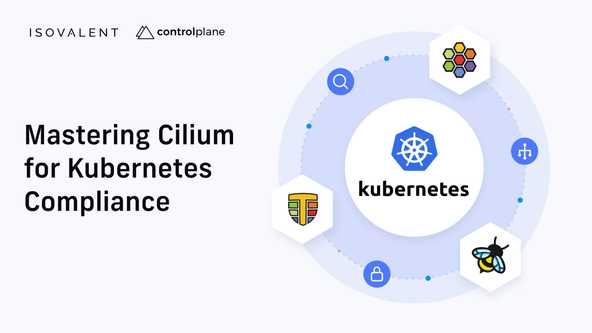Fireside Chat: Cloud Native Security & Compliance
Join ControlPlane’s CEO Andrew Martin and Isovalent’s Chief Open Source Officer Liz Rice for a fireside chat where they demystify Cloud Native Security and Kubernetes Compliance.
Supercharge your cloud-native compliance with the white paper from Isovalent and ControlPlane!
Master NIST-800 and other key compliance frameworks in cloud-native environments, with insights tailored for technical experts and leadership teams alike.
What’s inside:
From Strategy to Action:
Download the Cilium white paper now and take the first step towards mastering cloud-native compliance!
Problem Overview: Solving the security and management of dynamic Kubernetes environments is challenging. Traditional solutions fall short of addressing the complexities inherent in securing ephemeral IPs, dynamic pod lifecycles, and future-aligned network configurations.
This whitepaper addresses cloud native gaps, aligned closely with NIST 800-53r5 under the following control families: Access Control, Auditing and Accountability, and Incident Response.
Solution Highlight: Cilium, as a CNCF-graduated project and the only graduated CNI plugin, serves as the cloud native standard for secure and observable connectivity and offers an array of advanced functionalities that span networking to runtime through sub-projects Hubble and Tetragon.
Cilium, Hubble, and Tetragon simplify access control at the runtime and network layer, provide deep auditing and accountability data, and provide real-time and historical incident response across Linux environments.
Key Features: Cilium’s differentiators are advanced eBPF-powered networking, security, and observability features, which grant organisations Kubernetes identity awareness and fine-grained control. These capabilities facilitate easy-to-deploy implementation and validation of compliance principles in Kubernetes environments, supported by Hubble observability and Tetragon runtime features.
Target Audience: This document is tailored for technical compliance leaders, security teams, and platform engineering teams looking for a comprehensive solution to effectively manage Kubernetes environments and implement compliance principles using eBPF and Cilium.
Security Product Lead
Senior Technical Marketing Engineer


